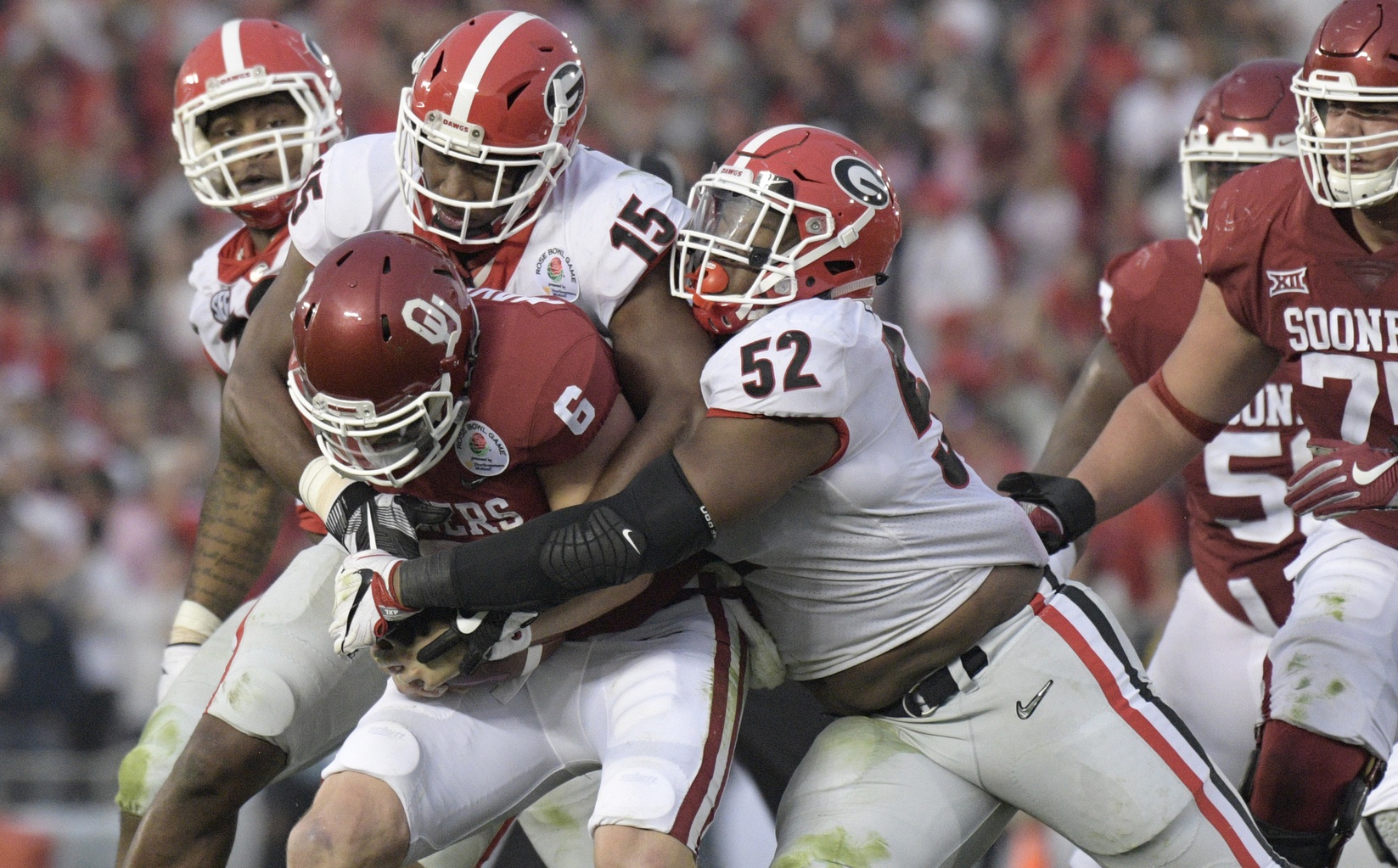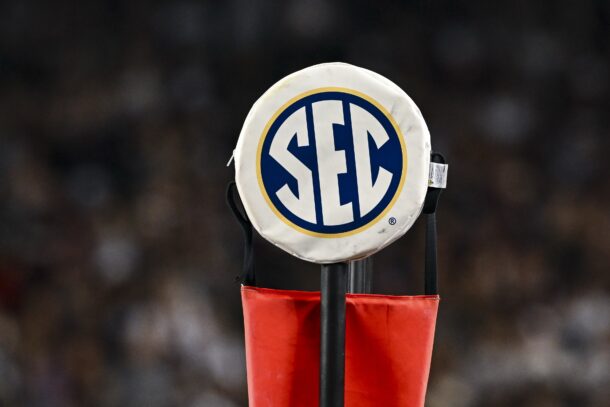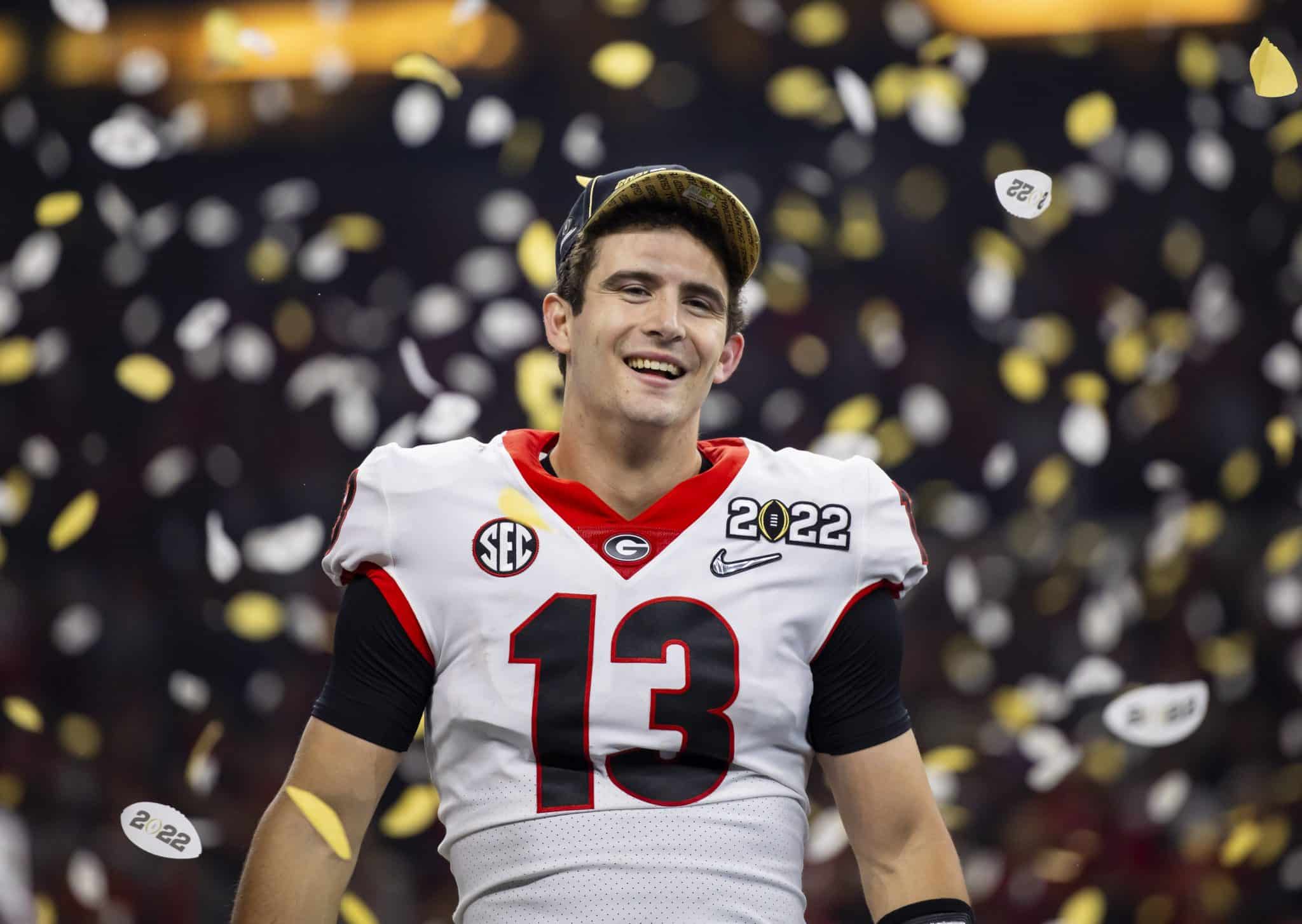
How does each SEC team perform against the real Top 25? Breaking down an interesting Playoff era trend
I like to use the word “hollow” when describing a season.
A hollow season is one that might look decent from the outside, but when you actually look inside the numbers, it wasn’t as good as it might’ve appeared.
A team like South Carolina would be a good example of a team who had a hollow season. The Gamecocks finished with 9 wins — that’s no small feat — but they were just 0-2 against teams that actually finished ranked inside the Associated Press Top 25.
I italicized “finished” because I think that’s an important distinction when we’re looking back on how good a season was. It doesn’t make sense for Florida to count the Tennessee game as a “win vs. the Top 25” just because that’s where the Vols were ranked when they met in September. We know now that Tennessee was the furthest thing from a Top-25 team.
The more wins against teams that finished ranked inside the AP Top 25, the less hollow a season is. That’s what shapes perspective. Fans feel better about their team if they look back on a season and see that the teams that they beat turned out to be good.
That got me thinking about how that translates to the SEC. As in, who actually beats good teams?

To find that out, I added up every SEC team’s record against teams that actually finished the season in the AP Top 25 (I limited it to the Playoff era because that’s when the divisions expanded across college football). What I knew I’d find was that Alabama beat a lot of really good teams. Duh.
What I thought I’d find was that a handful of SEC teams would have winning records against teams that finished in the Top 25. I was wrong about that. Very wrong.
As it turned out, Alabama and Georgia were the only SEC teams who had winning records vs. the Top 25 during the Playoff era. Add in Ole Miss and those were the only 3 SEC teams who even won more than 1/3 of their games vs. teams that finished in the Top 25.
Here’s the team-by-team breakdown:
- Alabama — 18-5 (.783)
- Georgia — 9-6 (.600)
- Ole Miss — 8-11 (.421)
- Auburn — 7-14 (.333)
- LSU — 6-12 (.333)
- Arkansas — 5-15 (.250)
- Florida — 4-12 (.250)
- Tennessee — 4-12 (.250)
- South Carolina — 4-12 (.250)
- Mississippi State — 3-12 (.200)
- Texas A&M — 2-14 (.125)
- Kentucky — 1-12 (.078)
- Mizzou — 0-10 (.000)
- Vanderbilt — 0-11 (.000)
My knee-jerk reaction was that looked pretty underwhelming. I expected programs like Auburn and LSU to at least be at .500 vs. Top-25 teams, and I thought Florida would be much closer to that even split (even if you take away Florida’s disastrous 2017 season, it’s still only a 4-10 mark vs. the final AP Top 25).
And hey, where are you, Texas A&M? Oh, you’re all the way at the bottom with a 2-14 mark?! Goodness. No wonder Aggies fans felt like 8-win seasons during the Kevin Sumlin era were hollow.
It stunned me to see programs like Texas A&M and LSU who have such good fan support/resources have such poor records against the final Top 25.
But how poor are those marks really?
Not nearly as bad as I thought, to be honest. As it turns out, having a winning record vs. the final Top 25 is quite the accomplishment. I found that only 3 non-SEC programs (Clemson, Ohio State and Oklahoma) could claim that during the Playoff era.
I dug up the records vs. the final Top 25 for a bunch of other non-SEC programs (during the Playoff era):
- Ohio State — 14-4 (.778)
- Clemson — 15-5 (.750)
- Oklahoma — 10-7 (.589)
- Wisconsin — 8-9 (.471)
- Florida State — 7-8 (.467)
- Michigan State — 8-10 (.444)
- TCU — 6-8 (.429)
- Northwestern — 6-9 (.400)
- Stanford — 6-10 (.375)
- Notre Dame — 6-11 (.353)
- USC — 7-13 (.350)
- Oregon — 7-14 (.333)
- Penn State — 6-12 (.333)
- UCLA — 5-12 (.294)
- Oklahoma State — 4-10 (.290)
- Miami (FL) — 4-11 (.267)
- Virginia Tech — 2-7 (.222)
- Washington — 3-11 (.214)
- Texas — 2-14 (.125)
- Louisville — 1-10 (.090)
- West Virginia — 1-13 (.071)
- NC State — 0-9 (.000)
When you look at a list like that with all of those elite programs, it sort of puts things in perspective. If you’re beating Top-25 teams more times than not, you’re an elite program. Period. The fact that Alabama, Clemson and Ohio State have done that at least 70 percent of the time is why they represent 9 of the 16 total Playoff berths.
It also makes you think about just how good some other programs really are. Washington’s numbers are skewed because it went a combined 0-8 vs. the final Top 25 before it flipped the switch in 2016 (much like Penn State). But the Huskies are only a combined 3-3 vs. the final Top 25 in consecutive New Year’s 6 Bowl seasons.
Then there are the programs like Louisville and West Virginia, which are the definition of hollow. It blows me away that with Lamar Jackson, the Cardinals beat just 1 team that finished ranked inside the Top 25 in the past 2 years.
And hey, remember that atrocious 2-14 mark for Texas A&M? Texas had the exact same record! Go figure that Arkansas had more wins vs. the final Top 25 than Texas and Texas A&M combined.
You’re welcome for the recruiting poster, Chad Morris.
So what’s the takeaway from all of these underwhelming records vs. the Top 25 during the Playoff era? Is everyone just really bad? No, but I know that for me, I need to adjust my expectations for how many games teams should win against quality opponents.
This data shows just how good Alabama, Clemson and Ohio State have been in the Playoff era. They aren’t just getting to the Playoff strictly based on reputation. And perhaps this shows that the teams in that next tier (Florida State, Georgia, Oklahoma, Wisconsin) can be average against the nation’s elite and still be considered premier programs.
Perhaps no better example of that was Auburn this past year. The Tigers were season 3-4 vs. the final Top 25, yet they still finished as a top-10 team. They went 10-4, which was only a half game better than South Carolina’s 9-4 mark. But 1 team beat both national championship participants while the other was 1-2 against teams that finished in the Top 25. South Carolina’s season was more hollow than Auburn’s season by a good deal.
Not all wins are created equal. If you learn nothing from all this math I did, remember that.
And that Alabama might have this football thing figured out.
Connor O'Gara is the senior national columnist for Saturday Down South. He's a member of the Football Writers Association of America. After spending his entire life living in B1G country, he moved to the South in 2015.






